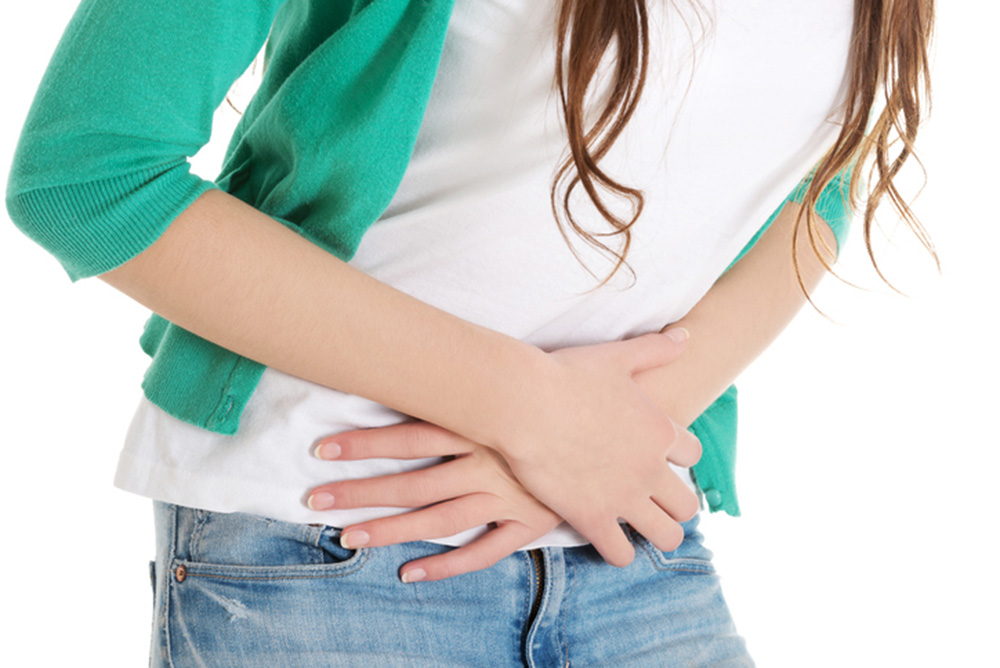
iStock
BELLY PAIN—a label sounding slightly less unpleasant than abdominal distress and covering more (physical) ground than stomach aches or cramping—includes these abdominal issues as well as the constipation or diarrhea that may accompany them.
Most often the diagnosis is irritable bowel syndrome (IBS), which affects from 7% to 25% of American adults and grows more common with age. IBS is not considered a disease but a “functional disorder,” like chronic fatigue syndrome, and can be traced to physical issues like trapped gas and intestinal spasms.
IBS is usually a “diagnosis of exclusion”—made in the absence of clinical signs of disease—but positive diagnosis can be made based on the “Rome criteria.” The criteria are specific about time: abdominal pain occurring at least one day/week for at least three months, with symptoms starting at least six months earlier. Symptoms must include two of the following: change in frequency and in appearance —either harder or looser—of bowel movements.
(Confusingly, the label IBS is similar to that of inflammatory bowel disease (IBD), including Crohn’s disease and ulcerative colitis, autoimmune diseases that often have a genetic link. IBD always involves involve inflammation, which is not present with IBS; usually begins before age 30; and can cause serious health difficulties.)
Because IBS is almost always exacerbated by stress, treatment can include relaxation techniques such as meditation, exercise and yoga. Medications such as Levsin and Bentyl can reduce intestinal spasms.
“Dietary and lifestyle changes seem to help the most,” according to Healthline. “Avoid aggravating the condition with fried and fatty foods and caffeinated beverages.”
Fatty foods appear on bad-food lists for most abdominal symptoms, because fat slows passage of food through the digestive system. When it remains in the intestines too long, fat can provoke IBS symptoms. While lingering in the stomach, it can cause GERD, or acid reflux, that includes heartburn, trouble swallowing and a dry cough.
For IBS, other categories of foods to avoid are “high-gas”—carbonated and alcoholic beverages, caffeine, raw fruit, and vegetables such as cabbage, broccoli and cauliflower. Also, FODMOPS (certain grains, vegetables, fruits and dairy products). For IBS with diarrhea, eliminating gluten can help.
“Disorders of gut-brain interaction” and “changes in how the brain sends and receives” signals from the gut are updated wording in the 2016 Rome IV criteria to reflect the role of the brain. Another change is minimizing use of the word “functional,” because it is “potentially stigmatizing”—that is, suggesting that mental health issues and not physical disease are the cause.
Clinical testing for suspected IBS checks for infection or problems with malabsorption and rules out other diagnoses. Endoscopy can pinpoint areas of trapped gas and spasm. Flexible sigmoidoscopy and colonoscopy allow visual examination of the colon. X-rays and CT scans produce images of the abdomen and pelvis—with ingestion of barium before X-rays, often called a lower GI series, aiding visualization of problem areas.
Diverticulosis, another cause of belly pain, can have some of same symptoms as IBS—or no symptoms at all—and the two can be difficult to differentiate. Both respond to the antibiotic rifaximin (Exifaxan), and both are increasingly common with age: diverticulosis occurs in some 50% of people over 60.
In diverticulosis, small pouches form in the walls of the digestive tract, possibly caused by muscle spasms or straining during bowel movements that builds pressure against walls of the colon. Past blame focused on insufficient dietary fiber, but recent studies have not confirmed the link.
In 10% to 25% of sufferers, infection or inflammation in these pouches, called diverticulitis, causes severe abdominal pain and fever. Prevention includes drinking a lot of water and eating a low-fat diet to speed digestion. Prunes or laxative medication can help with constipation.
Inflammation is also the villain in IBD, in this case caused by the body’s immune system mistaking food, bacteria and other materials in the GI tract for foreign substances and sending white blood cells to attack. Symptoms of diverticulitis and Crohn’s disease can be similar, with the chronic inflammation of Crohn’s disease causing fever, fatigue, persistent diarrhea, pain and rectal bleeding.
Crohn’s disease can lead to scarring and swelling and risk blockages throughout the GI tract, which over time can requiring surgery. Ulcerative colitis (UC), another IBD, leads to fewer complications and almost never requires surgery. In UC, the inflammatory immune reaction is confined to the colon (large bowel), with symptoms including urgent bowel movements and anemia. Ultrasound—which shows thickened loops of the intestines—as well as colonoscopy, CT or MRI, can diagnose IBD.
NSAIDs can be prescribed for these conditions to relieve pain caused by inflammation. But these drugs can also cause the so-called N-SAD stomach, because inhibiting inflammation can also reduce the body’s production of prostaglandins, which help protect the gut from the corrosive effects of digestive acids.
Some gut symptoms are anodyne. In addition to pain and constipation, 60s-something swimmer and Indian clothes designer L.K. felt lightheaded and, most worrisome to her, noticed what looked like blood in her urine. Examining her, the GI doc suspected trapped gas in the colon was causing spasms as waste passed through, which in turn caused lightheadedness, all of which should be alleviated by diet and laxatives.
And while blood in the urine accompanied by lower abdominal pain can indicate bladder problems like cystitis, reddish urine is often easily explained by recent consumption of beets or rhubarb. That symptom of L.K.’s vanished overnight.
—Mary Carpenter
Every Tuesday in this space, well-being editor Mary Carpenter reports on health news that affects our everyday lives.
